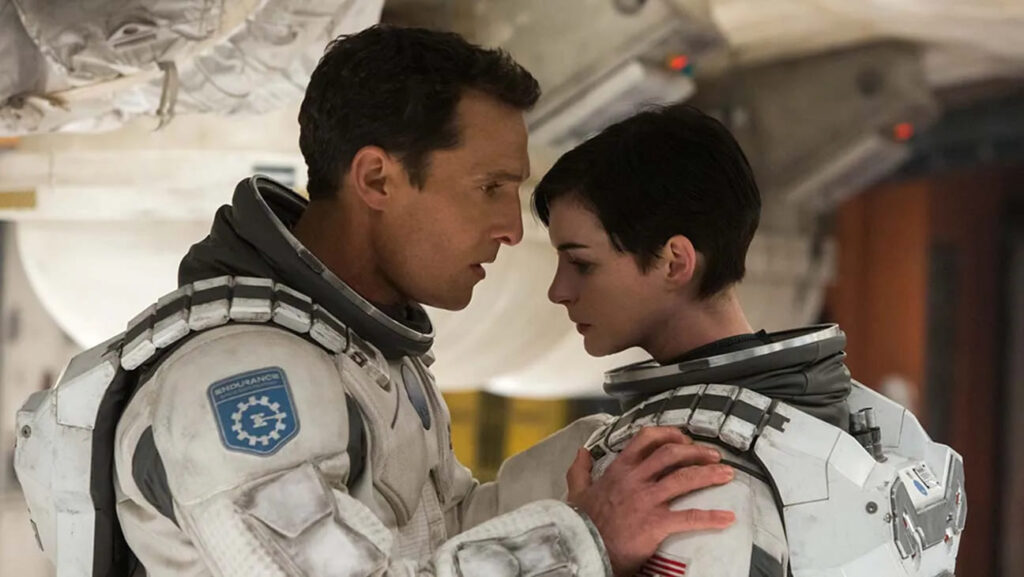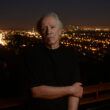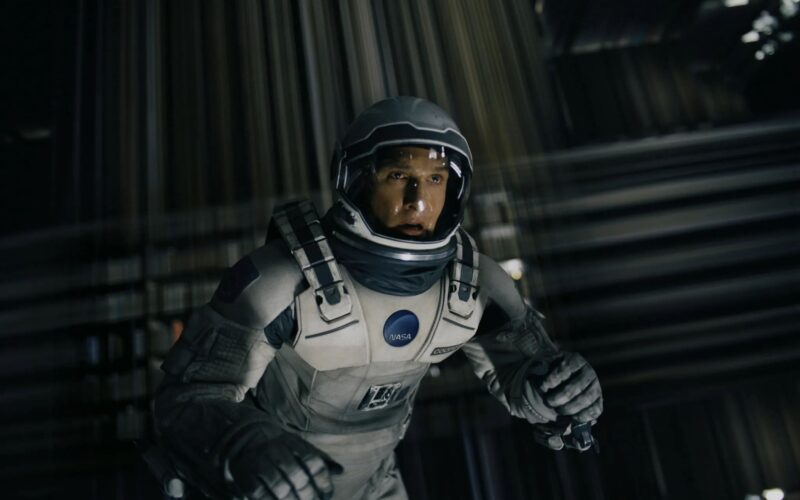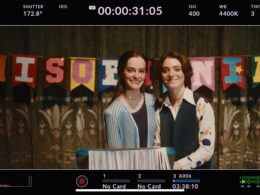Directed by Christopher Nolan, Interstellar takes audiences on an epic journey through space and time, following a group of astronauts who embark on a mission to find a new habitable planet for humanity. Earth is on the brink of environmental collapse, and the survival of the human race is at stake. With a screenplay co-written by Nolan and his brother Jonathan Nolan, the film explores scientific concepts like black holes, wormholes, and the theory of relativity, but it does so through a deeply emotional lens.
The film’s visuals, especially its depiction of the black hole Gargantua, set a new standard for science fiction. Nolan worked closely with renowned physicist Kip Thorne to ensure that the science behind the film was as accurate as possible, giving audiences some of the most realistic and mind-bending depictions of space ever put on screen. The blend of practical effects and CGI created a film that is both visually grand and intimately grounded, an aesthetic that remains one of the film’s hallmarks.
At its core, Interstellar is as much about the emotional gravity of human relationships as it is about the physical forces of space. Matthew McConaughey stars as Cooper, a former pilot turned farmer who leaves his daughter Murph (played by Mackenzie Foy as a child and Jessica Chastain as an adult) behind to lead a desperate mission to save humanity. The bond between Cooper and Murph, strained by the vast distances and the passage of time, gives the film its emotional anchor.

Themes of sacrifice, survival, and the power of love are woven throughout Interstellar, making it a film that resonates on both an intellectual and emotional level. The famous line, “Love is the one thing we’re capable of perceiving that transcends dimensions of time and space,” underscores the film’s belief in the endurance of human connection even in the face of overwhelming cosmic forces.
Hans Zimmer’s haunting and ethereal score is another key ingredient in Interstellar’s enduring impact. Unlike his more bombastic work in Inception or The Dark Knight, Zimmer used church organs and subtle orchestration to evoke the vastness and mystery of space. The music became integral to the film’s atmosphere, complementing the awe and terror of the unknown while amplifying the emotional weight of the characters’ journeys.
Though Interstellar was widely praised, it was not without its critics. Some found the film’s more abstract moments difficult to grasp, particularly the complex science and the emotional climax involving the concept of a fifth dimension. Yet, this willingness to take risks and challenge audiences is part of what has made Interstellar endure over the past decade. It’s a film that demands multiple viewings, with layers of meaning that continue to unfold over time.
Now, 10 years after its release, Interstellar stands as one of Christopher Nolan’s most ambitious and personal films. Its influence can be seen in the continued exploration of space and time in contemporary cinema, but its true legacy lies in how it makes us feel—wonder, awe, fear, and hope.
As we look back on Interstellar in 2024, it’s clear that Nolan’s masterpiece remains as impactful and thought-provoking as it was when it first graced the screen. Its exploration of humanity’s quest for survival and our enduring hope for a future among the stars continues to inspire and captivate audiences, reminding us of the eternal drive to explore the unknown.









